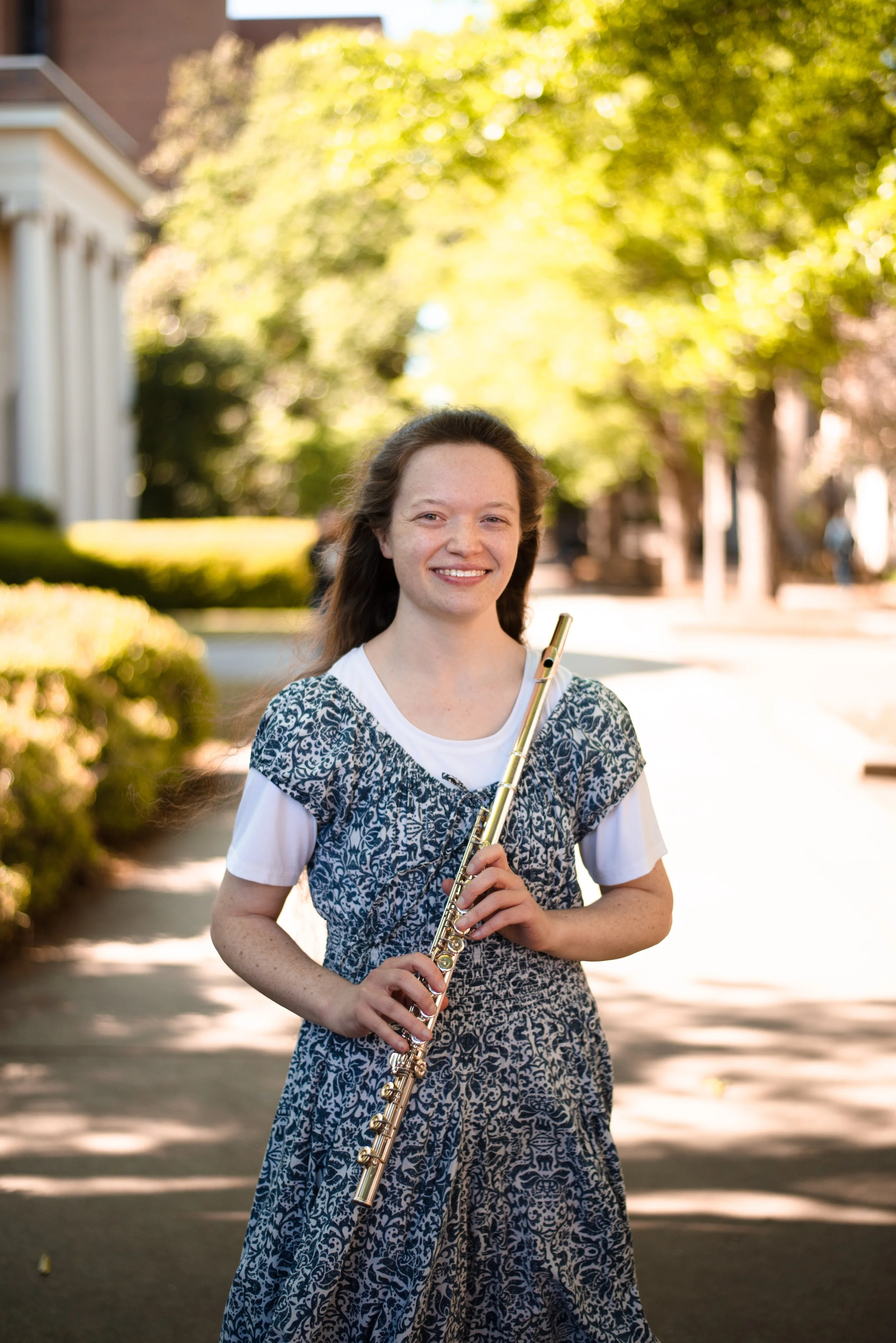Statement of Philosophy
As an advocate for the highest level of artistry and precision achievable in flute playing, I believe in cultivating a solid foundation through thoughtful practice of fundamentals, engagement with level-appropriate technical exercises, etudes, and repertoire, and intentional presentation of combined stylistic consideration and creative expression. The following points outline the specific components of my philosophy:
Posture that is upright and relaxed will allow the head to balance atop the spine and allow the legs to support and the arms to move freely. This setup will create a framework that reduces tension, creates the greatest amount of resonance in the body, permits the fingers to move freely, and enhances the intake and outflow of air.
Freedom and focus of airflow should always be a priority. Without freedom of airflow, the sound will be pinched and restricted; without focus of airflow, the sound will be fuzzy and will not project properly. A free, focused column of air will resonate through the flute, facilitate moving notes, and carry the sound into the performance space.
Engagement of the abdominal muscles in the process of rationing the outflow of air is crucial to maintaining a strong, beautiful tone and shaping musical phrases. This engagement (often called “support”) is one of the cornerstones of building a healthy management of airflow.
Clear, supported tone is central to a flutist’s development of a personal artistic “voice” and should be carefully cultivated. Tone on the flute should almost always be beautiful, and it should be flexible and sensitive according to the needs and indications of the repertoire. As one of the most personal and unique elements of the flutist’s artistry, tone must be resonant, free, focused, and vibrant.
Dexterity of the fingers should be a concentration of every practice session. Freedom, precision, and clarity of movement enable the flutist to play the most challenging passages of music with ease. Dexterity should be addressed by focusing on exercises that target the movement of one finger at a time, followed by the movement of “cross-fingerings,” which require the player to move multiple fingers at the same time. Flutists should pay special attention to the complex cross-fingerings of the third octave in order to develop even dexterity across the whole range of the flute.
Vibrato should be applied as desired to highlight the shape and direction of a phrase and to enhance an already beautiful tone, but it should not be mistaken for the source of a vibrant tone. Vibrato should almost always remain within the sound; vibrato that is too wide in altitude distorts the pitch disproportionately and disrupts the sense of a pitch center, whereas vibrato that remains close to the center of the pitch adds an extra layer of depth and brilliance to the tone.
Intonation is an essential element of the flutist’s technical and artistic development. Training the ear through aural exercises, identifying intervals, and singing will build the flutist’s concept of proper tuning. Practicing with a tuner and with drones will develop a strong foundation of recognizing the tendencies of individual notes on the flute, which will directly impact tuning when playing with other musicians.

